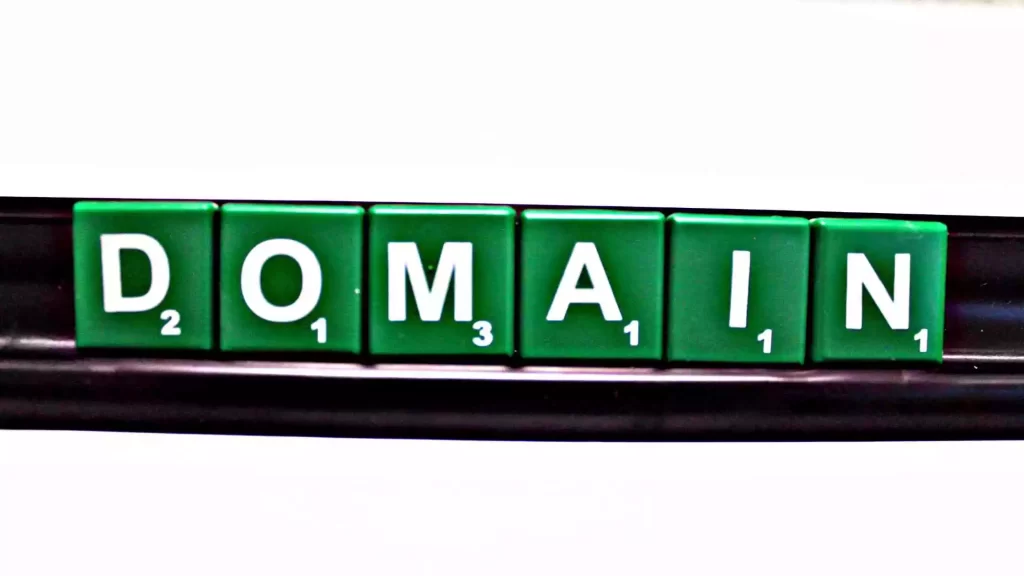A website consists of several important elements; a domain name is undoubtedly one of the most important.
It is, however, one of the most translated parts. We, therefore, ask the important questions, what is a domain – and perhaps even more important, How do you choose a good domain? We have put together this guide to provide a quick introduction to this important topic.
Regardless of whether you want to launch an online store or start your blog, a domain will be an important part of your project.
It would be ideal if you were well-versed in the requirements of a domain, what possibilities there are, and why you need one.
A good domain will influence how people find your website and quickly become part of your brand.
In addition, a domain crosses over into marketing, user-friendliness, and, not least, the first impression of your website. Because of this – as well as a number of other elements you will soon discover – a domain is undoubtedly important.
But before we delve into these areas, let’s start with the most basic.
What is a domain?
In short, a domain is an address someone types into their browser to visit your website.
In other words, this is your unique address on the Internet – an address that cannot be copied or changed along the way. An example of this is Financebode.com, which is our unique URL or domain.
In the early days of the Internet, IP addresses were used to visit a website. These were numbers from 0 to 255 in a specific frequency.
However, these were well-suited for computers surfing the web but a bit harder for humans to keep track of.
That’s why domains were created as a user-friendly alternative for us humans. Most people will agree that it is far easier to remember a domain name than a long list of numbers for each website.
For example, most of us will remember Google.com when we want to look something up, but very few would have remembered 172.217.3.196 – the numbers that are the actual address of Google online.
That said, it’s important to know that the domain name is only part of our URL. We will therefore take a closer look at how a URL is constructed.
As we have already mentioned, Financebode.com is our online domain. However, the full address consists of HTTPS:// Financebode.com.
Here HTTPS:// constitutes the protocol we want to implement, i.e., visit a website. financebode is the name, and .com is the extension for United States websites. Our domain name is thus Financebode.com.
How do domains work?
The Internet is a jumble of connected computers, servers, mobile phones, and tablets.
Each of these devices is identified by other machines using an IP address. This is the address they use to send, receive and find information online.
As previously mentioned, the domain is just a simplified version of IP addresses. These were created as the Internet expanded, and we humans needed easier access to websites.
A domain is an address in text format linked to a specific website’s underlying IP address.
This is where the domain name system comes into play. A computer will reconvert a domain name you type into numbers when you do so in your browser.
This happens through a so-called DNS (Domain name system), which is a system that turns domain names into readable numbers for a computer.
This system is controlled by ICANN and can be considered a telephone directory for computers.
In practice, the ICANN database is a system where computers can look up domain names and find the correct number (IP address).
To have a better grasp of how this system really works, we will see how the process works.
- You type a domain name into your browser, for example, Financebode.com.
- This creates a request that is sent to a DNS server.
- The DNS server will find the server where the website is located and then the relevant IP address.
- The server then uses the IP address to find the files that are stored and sends these back to the browser in the form of the actual website.
Although on paper, this is a relatively extensive process that includes up to 6 different devices, it will rarely take more than a few seconds to complete.
The difference between domain and hosting
Both hosting and domain are important to your website, but there are some noticeable differences that most people don’t know about.
It is, therefore, important to know the difference between domain and hosting to better arrive at the best solutions for your website.
A domain and hosting are often closely linked. It is common for these to be supplied by the same provider.
To illustrate how a domain and hosting work together, we can start with an apartment complex. Your homepage will make up the apartment building itself, and each page will make up an apartment.
But to build this complex, you will need a place to set up the building. This construction site is what we call hosting. All the files that make up your website will be saved so others can find them.
However, visitors will need to know how to find your building; this is where a domain comes into play. A domain is practically the address of your website, just as it would be for a building.
Something many people do not think about is that the address of our building – in practice is a simplification of coordinates.
We could only send an invitation with geographical coordinates, but it is far easier to find an address. Similarly, a domain acts as a substitute for an IP address.
Different types of domain
Although all domains are linked together using the DNS system, this system is again divided into three different structures. We, therefore, divide domains into three different categories, all of which have their purposes and duties:
- Top-level domains (TLD)
- Second-level domains (SLD)
- Third-level domains
This hierarchy forms the framework for how ICANN’s database for domains is divided into different levels. We will now take a closer look at what the different levels entail.
Top-level domain (TLD)
When we talk about a domain, it is usually the top-level domain that most people refer to. This is what comes after your domain name.
TLDs or extensions, as they are also called, are .com, .net, .co, .org, etc. These are used to recognize different companies, geographical locations, and purposes.
There are currently 1503 different TLDs available for registration, and these are handled by the ICANN system. .com is, without a doubt, the most popular, and there are currently 151 million .com domains registered. (Source)
A second-level domain (SLD)
As we have already talked about, a domain is divided into several levels. When we talk about the second-level domain, we are talking about what comes right before the top-level domain (TLD).
In our case financebode.com, the financebode will be the second-level domain, and .com will be our top-level domain.
Third-level domain
The last level we are talking about is the third-level domain. This comes before the second level and is often referred to as the subdomain or subdomain.
If we had had a separate blog on our website, a third-level domain could, for example, have been blog.financebode.com. Here, the blog will be the third level, the online store the second level, and the .com will be the top level.
Why do you need a domain?
For the site
Without a domain name, people will have to remember the IP address of your hosting server to get to your site. Therefore, choose a domain that is easy to remember so that it is easier to find you.
For mail
You can configure email on the domain. Let’s say you registered a domain best.com and want people to be able to send mail to the address contact@best.com. To do this, you will need to purchase hosting and set up your email account.
For parking
Domain parking is when you place a page on a domain with an inscription such as “The site is still under development.” Such a page is called a parking page.
When the site is ready, the domain will still be needed. Therefore, it is worth registering a name you like before someone else takes it.
For forwarding
Even if you didn’t plan to launch a site, you could set up a redirect to your Facebook, Instagram, or Twitter account on the domain. After that, anyone entering the domain in a web browser will be taken to your profile page.
What’s next
Technical requirements for domains
In order for a second-level domain to be registered, it must meet a number of requirements, these are:
- Length – minimum 2, maximum 63 characters. The shorter the domain name, the easier it is for a person to remember, which is why companies tend to choose short domains. But in the most popular zones, sonorous catchy short domains are either occupied or sold very expensive, so choosing a name shorter than five characters will not work.
- Letters – in all zones, they use Latin letters – the Cyrillic alphabet familiar to us, with the exception of the letter ё. DNS servers that read domain names are not case-sensitive. Traditionally, domain names are written in lowercase letters.
- Numbers – Arabic numerals are used in domains.
- Additional characters are “.” and “-.” The symbol “.” is used ONLY as a separator between subdomain, domain, and domain zone. The “-” character is used inside the name but cannot be duplicated – the “–” option is not allowed, as is the use of a hyphen as the first character in the name.
In other domain zones, owners may set other requirements. For example, there are zones where the allowable length of a domain name reaches 127 characters, but this makes little practical sense.
Choose a name
If you’re registering a business domain, include your company name. The shorter the domain name, the better. Try coming up with a name that will be shorter than ten characters. If there are more than three words in the domain, it won’t be easy to remember.
We understand that coming up with the perfect name for a website is difficult. If nothing comes to mind, read our article on How to choose the best blog name.
When you find a suitable domain, be the first to register it. As long as the domain is not registered, anyone has it.
Why Check Domain History
Buying a domain is a lease. Typically, the site domain is rented for a year. After this period, you can renew the use after making a payment. If the lease is no longer renewed, the domain becomes available for registration again. But its history remains, and it may contain:
- Facts of assimilation / falling under the filters of search engines. Such domains are more difficult to promote, as search engines “remember” that there were claims against them.
- Use in the dubious subject matter. For example, when choosing a domain name to sell children’s products, there is theoretically a chance to use the domain used to host a website selling adult sex toys. Such historical baggage will harm the reputation of the company.
Anyone can check the history of a domain: for example, through the web archives. If the site during its existence did not fall under any filters and sanctions of search engines, a large age of the domain will be a plus.
Since the first indexing of this domain, it has already gained the trust of search engines, and its prospects of being in high positions in search results are greater than that of a newly registered domain.
Could you register it?
Go to the domain registration page and enter the domain you liked in the search. If the domain is already registered, you will be offered similar options.
You must provide your name, address, and email address during registration. Please provide the correct information. This will make it easier to prove the rights to the domain if someone else tries to impersonate its owner.
conclusions
When choosing a domain name, remember:
It should either be derived from your brand or, in some way, indicate the scope of the company.
The domain must be unambiguous to understand and easy to write, read and listen to.
It must be registered in the zone that is best ranked by search engines, taking into account the geography of your business. The right, simple, descriptive domain name can be a big plus for your site’s search engine promotion, while a rash choice can slow it down.





